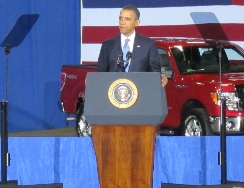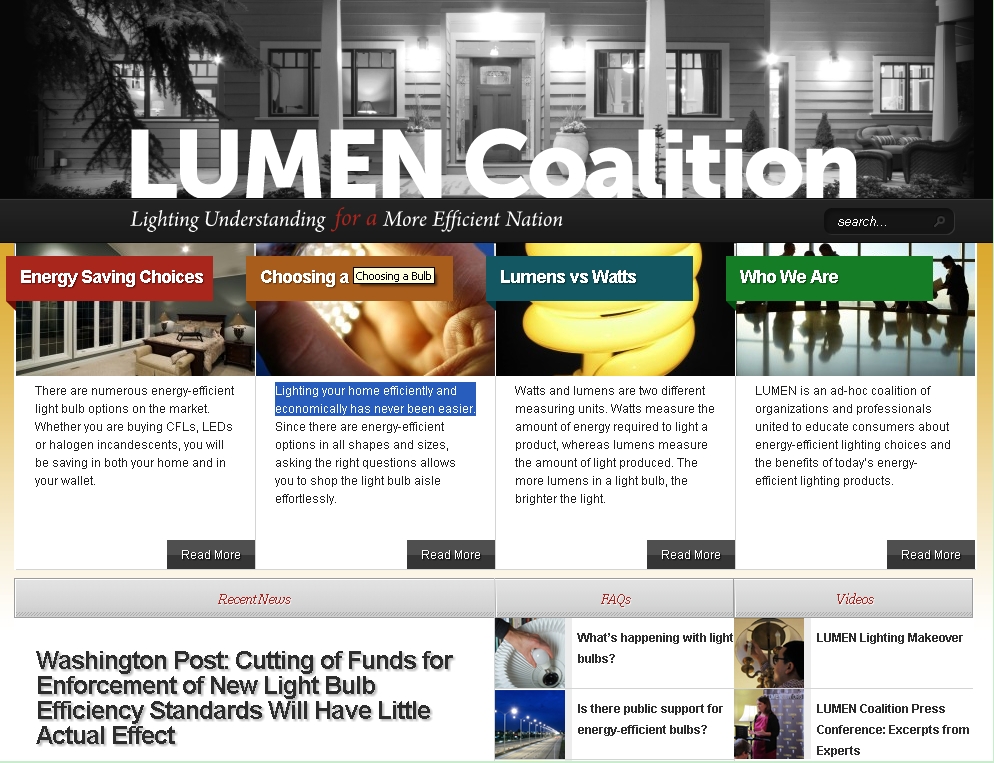
Author(s): Miriam Berg
In 2011, energy efficiency helped create jobs, cut costs and make the United States more energy independent. Read on for the biggest advances made last year in energy efficiency.
Policy
Many pieces of bipartisan legislation supporting energy efficiency were introduced in Congress.

On May 12, Sens. Jeanne Shaheen (D-N.H.) and Rob Portman (R-Ohio) introduced the Energy Savings and Industrial Competitiveness Act of 2011 (ESICA). This bill aims to increase the use of energy-efficient technology in the residential, commercial and industrial sectors of our economy, while fostering job creation. The Senate Energy Committee passed ESICA with an overwhelmingly bipartisan vote of 18-3; the bill is awaiting consideration in the House.
The Sensible Accounting to Value Energy (SAVE) Act was introduced by Sens. Michael Bennet (D-Colo.) and Johnny Isakson (R-Ga.). The SAVE Act would help homeowners by including the energy efficiency of homes in calculations that determine mortgage eligibility.
The Property Assessed Clean Energy (PACE) Protection Act was introduced in the House. PACE financing provides up-front capital for energy efficiency and renewable energy projects that is subsequently paid back through a special assessment on participants’ property taxes. The no-cost, no-mandate PACE Protection Act would enable local governments to finance home energy efficiency projects.
Technology

A host of energy efficiency apps made it easier to save energy and money in 2011. But probably the most talked-about technology of the year is a huge upgrade for a formerly low-tech item: The Nest thermostat, developed by the iPod design gurus, was introduced to great fanfare. Designed to “learn,” the thermostat adjusts the temperature according to when it senses occupants are around, what the weather is like, and the habits of its users.
Data centers continue to become more energy efficient as the world grows more dependent on cloud computing for massive data needs. Advances in server technology could reduce server energy use by as much as 89% compared to conventional server systems.

President Barack Obama announced new Corporate Average Fuel Economy (CAFE) standards for vehicles. The National Highway Traffic Safety Administration is raising the average MPG standard for model years 2017-2025, requiring a 54.5 MPG fuel efficiency by 2025 for cars and light-fleet vehicles. These standards could save 3.5 million barrels of oil a day by 2030.
Some of the largest industrial trucking fleets in the nation announced new measures to reduce their fuel use with the National Clean Fleets Partnership. The charter members of Clean Fleets – AT&T, UPS, FedEx, PepsiCo and Verizon – operate more than 275,000 vehicles total. With technical assistance from the Department of Energy and its Clean Cities program, these companies will replace 20,000 delivery trucks with fuel-efficient vehicles. The initiative seeks to cut oil use among fleets by 2.5 billion gallons by 2020.
Lighting

The LUMEN Coalition – an organization of manufacturers, retailers, energy-efficiency advocates, consumers groups, utilities, government advisors and others – was established in January and launched its website in July. Designed to clear up misinformation about the now in-place transition to energy-efficient lighting, the website includes all you need to know about light bulbs: purchasing tips, news and video resources, and answers to common lighting questions.
The Alliance stayed vigilant in the face of politically charged opposition to the new lighting efficiency standards. In addition to making calls to action, the Alliance worked to educate politicians and consumers alike about the enormous benefits of the standards.
Industrial
 On June 15 the International Organization for Standardization (ISO) rolled out the ISO 50001 Energy Management Standard.
On June 15 the International Organization for Standardization (ISO) rolled out the ISO 50001 Energy Management Standard.
This new standard provides a consistent framework for integrating energy efficiency into industrial facilities’ management practices. Fifty-two nations were involved in the creation of ISO 50001, one of the first internationally recognized standards addressing energy management and efficiency.





